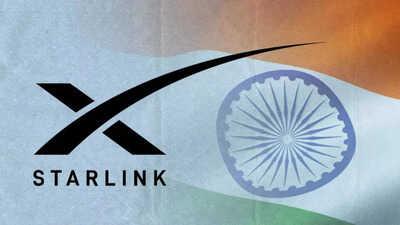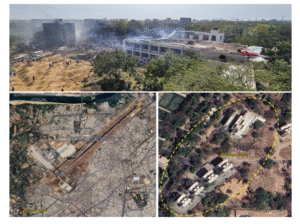Written by EduInvesting News | 12 July 2025
Tags: Starlink, SpaceX, Satellite Internet, Elon Musk, Digital India, Telecom Regulation
Introduction
After nearly four years of regulatory back-and-forth, Elon Musk’s Starlink Satellite Communications has finally received the green light to operate in India. On July 8, 2025, India’s national space regulator, IN-SPACe, issued Starlink a five-year license to operate its Gen-1 low-earth orbit (LEO) satellite constellation over Indian skies. With this, Starlink becomes the third player authorized to offer satellite-based broadband services in the country, after Bharti-backed OneWeb and Jio’s joint venture with SES.
This decision marks a transformative step for India’s internet infrastructure, especially in rural and underserved regions, and sets the stage for a new wave of competition and innovation in the broadband market.
What Just Got Approved?
- Operator: Starlink Satellite Communications Pvt. Ltd (Indian subsidiary of SpaceX)
- License: Approval under IN-SPACe rules for satellite operations in India (valid for 5 years or until Gen-1 satellite decommissioning)
- Services Allowed: Satellite broadband services via LEO constellation
- Previous Milestone: Department of Telecommunications (DoT) granted GMPCS license in June 2025
With both space and telecom authorizations in place, Starlink is now legally positioned to offer services—pending spectrum allocation and infrastructure deployment.
Pending Approvals & Roadblocks
Despite the regulatory breakthrough, Starlink is not commercially live in India yet. Three critical steps remain:
- Spectrum Allocation:
Starlink requires spectrum in Ku and Ka bands, which the DoT has not yet allocated. The debate continues over whether spectrum for satellite broadband should be auctioned or administratively allocated. - Ground Infrastructure Setup:
Starlink must establish telemetry, tracking, and control (TT&C) stations, install user terminals (dishes), and partner with Indian players for VSAT ground stations. Talks with Bharti Airtel and Reliance Jio for backend support are reportedly in advanced stages. - Security Clearance & Field Testing:
The Indian government is expected to impose stringent cybersecurity, data localization, and surveillance compliance norms. Trials will begin only after the Ministry of Home Affairs and CERT-IN are satisfied with the network architecture.
Estimated timeline for rollout: Late 2025 to Early 2026
What Will Starlink Offer India?
Service Type: Satellite broadband using LEO satellites (550–570 km altitude)
Coverage: Entire India, including rural, border, and remote regions
Speed Range: 50 Mbps to 250 Mbps
Latency: ~20–40 ms
Total Bandwidth Capacity Over India: 600–700 Gbps (as per filings)
Expected Pricing (Unofficial)
| Component | Estimated Cost (₹) |
|---|---|
| Hardware (Dish Kit) | ₹30,000 – ₹35,000 |
| Monthly Subscription | ₹3,000 – ₹4,200 |
| Installation (optional) | ₹1,000 – ₹2,000 |
Some reports speculate an entry plan as low as ₹810/month for specific use-cases (schools, remote health centers), but there’s no official confirmation.
Why India Matters to Starlink
India is Starlink’s largest untapped market by sheer population, with:
- Over 200 million unconnected people
- Large terrain gaps for fibre rollouts
- Government-led Digital India and BharatNet programs needing last-mile support
- Increasing demand for backup broadband in urban areas with frequent outages
Elon Musk’s plan aligns with PM Modi’s “Antyodaya” vision—reaching the last person first.
Competitive Landscape
| Player | Type | Partners | Status |
|---|---|---|---|
| Starlink | LEO | TBD (Airtel/Jio) | Launching 2025–26 |
| OneWeb | LEO | Bharti Airtel | Approved, scaling |
| Jio-SES | MEO | SES, Jio | Service trials begun |
| BSNL (proposed) | GEO | ISRO | Legacy slow speeds |
While OneWeb and Jio-SES focus more on enterprise and backhaul, Starlink aims at consumers, schools, and retail homes.
Risks & Concerns
- Regulatory Flip-Flops: Starlink was forced to refund pre-orders in 2021 after DoT restrictions. Past delays may repeat.
- Pricing Barrier: Current estimates are 10x rural ARPU; subsidized models may be needed.
- Spectrum Auction Policy: Pending legal clarity could delay rollouts further.
- Security Vetting: India’s strategic sensitivities may slow approval of foreign-controlled communication networks.
What’s the Government’s View?
The IN-SPACe and DoT greenlights indicate a strong policy shift toward liberalizing India’s space economy. Officials have stated:
“India needs redundant, resilient broadband networks… LEO-based systems are key to digital inclusion.”
– Telecom Secretary (July 2025)
The government is also working on a New Spacecom Policy, expected by Q4 2025, to streamline satcom licensing and make India a regional satellite hub.
Conclusion
Starlink’s entry is no longer a question of if, but when. With approvals now in place, India stands at the cusp of a satellite broadband revolution. If rollout hurdles are cleared and pricing adapts to local realities, Starlink could help bridge the digital divide for millions—while shaking up India’s telecom status quo in the process.



















